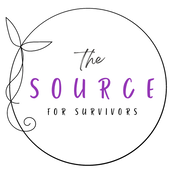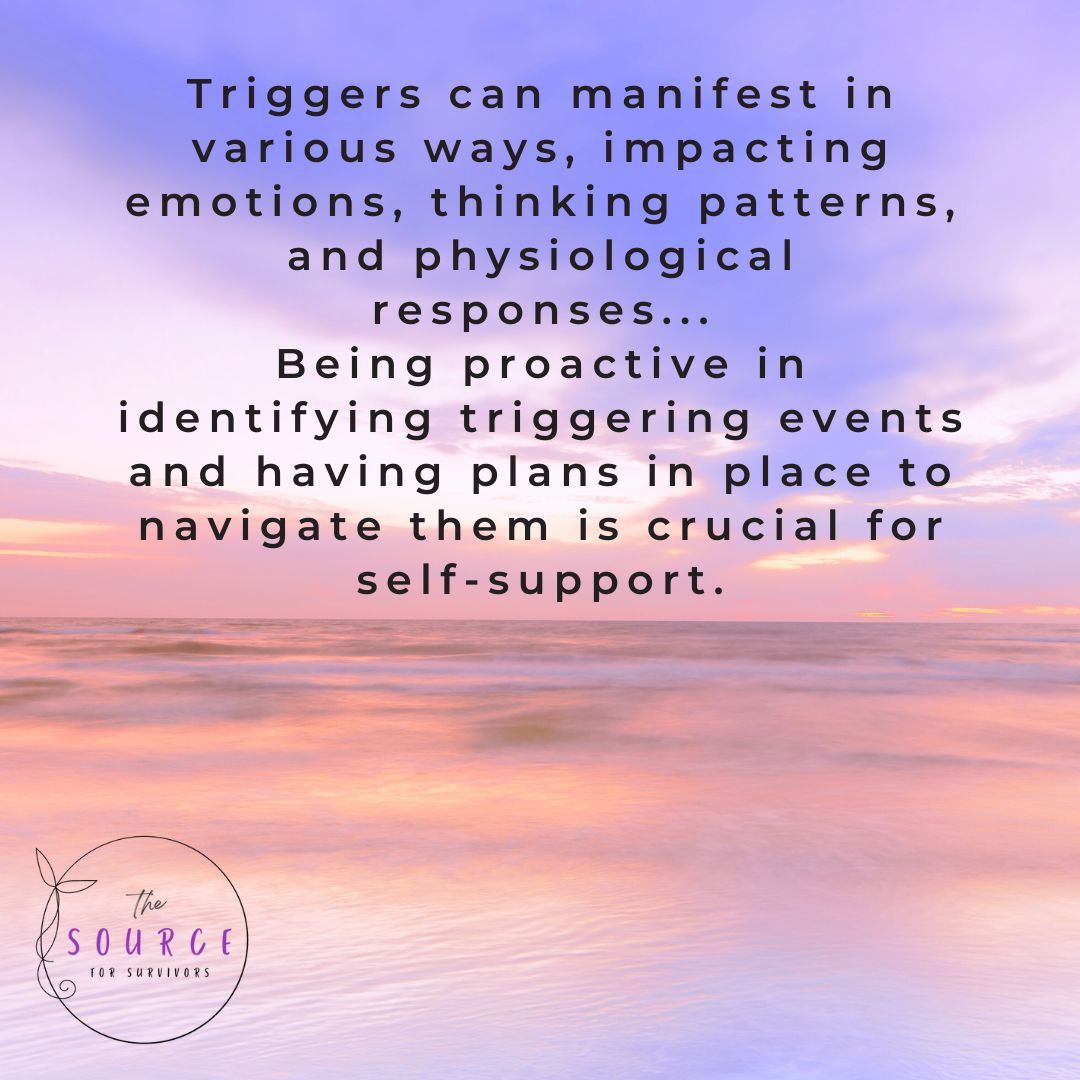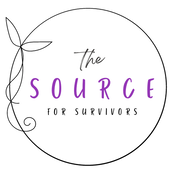|
By Christine Murray
If you’re healing from the immediate or long-term effects of an abusive relationship, it’s natural to feel like you’re riding an emotional roller coaster at times. As I’ve discussed before throughout this blog, it’s so important to practice self-care and process our emotions while we are on the journey of healing from past abuse. Many survivors, such as those who share children with their former abuser, may need to stay in contact with their abusers even long after the relationship ends. Even if you’ve been able to cut off all contact with your former abuser, chances are you still will encounter difficult or toxic people and relationships. A helpful skill to learn when dealing with difficult, and even potentially unsafe, people is to practice taking a pause before responding to any intense emotions you may feel. Of course, if you’re facing an immediate safety risk, contact your local emergency authorities or a crisis hotline. (Visit our Other Resources page for more information about resources like the National Domestic Violence Hotline and the 9-8-8 Lifeline for Mental Health Crises.) Taking a pause in emotionally charged situations can give you a short break to calm your mind and emotions so you can think more clearly about your best next steps. Sometimes, we can take longer pauses, such as if we can take an hour or so to cool down, or even a longer amount of time to seek out guidance from a trusted professional or loved one. However, often intense situations require quick responses, and we may not be able to take an extended break to fully process our thoughts and feelings. In these moments, even a brief pause can be helpful. Below are a few suggestions to begin practicing taking quick pauses when you’re facing intense emotions and situations. First, try to practice taking a “pause” even before you are faced with a situation in which you’ll need to use it, such as an interaction with your former abuser or another difficult person. This might involve simply thinking or writing some ideas ahead of time for what kind of pause strategies might work best for you. If you feel emotionally safe to do so, you might even try to imagine yourself in an intense situation, and then visualize yourself taking a calming pause to regroup in that imaginary situation. (If this kind of visualization is triggering to you right now, it’s okay to wait until you’re ready to use this technique.) One helpful strategy that some people find useful for taking a pause is to take a brief, but deep breath or two to help calm you in the moment. As you are taking your deep breaths, check in with yourself using the following questions: How am I feeling right now? What is happening in my body? What is my gut reaction for how to respond? Would this response be helpful or unhelpful in this situation? You may not have time to fully explore all of these questions, so pick the one(s) that are most helpful to you at the moment. Another possible pause-taking tool is to physically ground yourself in your body at the present moment. For example, you might tune into all five senses (e.g., “What am I seeing, smelling, and tasting right now?”), notice your feet planted on the ground, or use a comforting self-touch, such as gently massaging your shoulders. Keep in mind that brief pauses often can’t give you enough time to fully process your thoughts, emotions, and reactions in a stressful situation. However, they can be helpful to stay calmer and make more thoughtful decisions about your responses during a challenging relationship situation. Later, when you have time and feel safe to do so, you can further explore what was happening in your mind, body, and emotions in the intense situation, as well as reflect on how well the steps you took to pause in the moment worked for you. You may find it helpful to connect with a trained mental health professional to process these intense experiences. Remember that it’s a brave step to take to reach out for help when needed, and everyone needs a little help sometimes. Taking a pause can be a valuable coping tool for survivors of abuse, as well as for anyone else who feels uncomfortable responding to intense emotions in the heat of the moment. This tool can be most helpful when we practice it before we actually need it so we’re ready to put it in play when intense, stressful situations arise.
0 Comments
By Christine Murray
Have you ever found yourself in a crowded room, yet feeling completely alone? Or perhaps you've had moments where you actually were alone, and the silence around you became deafening? Being alone (i.e., by yourself) is different from the often challenging and complicated feeling of loneliness. Loneliness is a complex emotion characterized by a feeling of disconnection and isolation from others. Loneliness often brings distress and a sense of separation, whether or not anyone else is around. In contrast, we can have peace and enjoy moments of solitude even when we are alone. For many survivors on the path of healing from abuse, loneliness can be a recurring and unwelcome companion. If loneliness feels overwhelming and highly distressing for you, reaching out for help is crucial. The 988 crisis helpline and our Other Resources page can help you find resources to search for a trained mental health professional who can offer support during challenging, lonely times. Loneliness can show up differently for each person. At its lowest points, it can be deeply uncomfortable or distressing, impacting our daily life and well-being. Many survivors know the feeling of loneliness from their experiences of being in an abusive relationship. The abusive dynamics can create an atmosphere of isolation and disconnection from others--which may have even been an intentional abuse tactic used by the abuser to gain and maintain control. Many possible factors can contribute to experiencing loneliness along the abuse recovery journey. Survivors may lack a supportive network of people who understand their experiences, leading to feelings of disconnection. Also, the lasting effects of abuse, such as lowered self-esteem and self-blame, can exacerbate feelings of isolation. Significant life changes, like moving to a new location or rebuilding social networks after leaving an abusive relationship, can also contribute to loneliness. The healing process itself, which often involves deep introspection and emotional work, can also intensify feelings of isolation as survivors navigate their inner worlds. It can feel difficult to connect with others when we are deeply working through our own thoughts and emotions. When facing loneliness, practice healthy coping strategies to process and move through these emotions along your journey, such as the following four approaches:
Loneliness is a universal human experience, and navigating loneliness with self-compassion and resilience is an important--although often challenging--part of the healing journey following an abusive relationship. Feeling lonely doesn’t mean there is anything wrong with you. In fact, being open to facing feelings like loneliness is a sign you’re growing and seeking healing. Loneliness can be a clue that you are seeking out healthier, more positive connections in your life, and that you recognize you deserve healthy support from the people around you. Remember, loneliness is just one part of your journey, and by acknowledging it, you're taking proactive steps towards creating a life that aligns with your values and aspirations By Christine Murray
As a trained mental health counselor and marriage and family therapist, I’ve always said that the day I stop believing people can change is the day I should leave my profession. Yet, changing long-standing patterns in how people think and behave is no easy feat; it demands determination and persistence. Moreover, as we age, our habits often become more entrenched, making change even more challenging if people have been using similar behaviors for a long period of time. While change is always possible, the more pertinent question often becomes: Is change likely? If you're navigating or recovering from a toxic or abusive relationship that is the result of another person’s harmful behaviors toward you, you've likely wondered, "Will this person ever change? Can they even change? Do they want to change?" While people can indeed change under some circumstances, they typically must do so driven by their own desire, on their timeline, and through their chosen process. One crucial indicator of potential change is whether the person shows a genuine interest in doing so. Even more fundamentally, they must recognize the need for change due to the harm their behaviors inflict on others. The likelihood of someone altering harmful behaviors increases if they acknowledge the problem and express a genuine commitment to address it. People who regularly engage in hurtful behaviors and consistently show a pattern of avoiding responsibility and accountability are the ones that raise the biggest red flags for me. One decision you can make to guard your well-being is to consider how long you may want to give a relationship to see if it will change. Change can take time, so it makes sense to be patient in some situations, especially if the other person is showing a genuine interest in working on their behaviors and the relationship. On the other hand, waiting for a harmful person to change could be an extended, or even lifetime, commitment, and you may not be willing to take on the suffering that you might endure over that time frame. Try to realistically assess the other person’s willingness and capacity to change, and work to put healthy boundaries in place if you decide to wait on a hopeful change in a toxic relationship. Take good care of yourself, and make your emotional and physical safety a priority when you’re dealing with someone who has hurt you. Be sure to seek professional help if you feel your safety is at risk or if you think a trained professional could help you sort through your thoughts and feelings about a specific person in your life. And always know you are worthy of making decisions that foster your personal growth, healing, and safety - even when these decisions can be difficult to make at times. By Christine Murray
The term "triggered" has become a bit of a buzzword lately, extending beyond its original use in trauma-related contexts and entering mainstream language. It's not uncommon to see it in memes or hear the term in casual jokes. However, for survivors of trauma and past abuse, being triggered is a very real and serious experience, and it's far from a laughing matter. When you're a survivor, being triggered can be deeply distressing, potentially throwing you into a state in which it's challenging to understand what's happening in your mind and body, and figuring out the best way to respond can be challenging. Each person's experience with triggers is unique, so it’s important to reflect on what is helpful for you if and when triggers arise. Exploring personal triggers and developing strategies for navigating them can often benefit from the support and guidance of a trained mental health professional. If you're considering seeking professional help, check out the Other Resources section on our website, where you can find databases to search for mental health professionals in your area. In today's blog post, I'll delve into a few common experiences people may face when encountering triggering events and circumstances, as well as share some general strategies that may be useful in navigating these challenging moments. The concept of triggers is personally relevant to me. Despite being years into my own healing journey and having made a lot of progress, I still encounter situations where I become aware of being triggered. Learning to navigate these triggers has been an important part of my personal healing process. Based on my personal and professional experiences, I've observed some common responses when survivors of past abuse encounter triggers. One common reaction can be the resurgence of flashbacks or memories directly linked to experiences of past abuse. Triggering situations or circumstances may evoke memories reminiscent of the abusive situation. Individuals dealing with past trauma and PTSD may revisit these triggered memories in various ways, such as through nightmares or during quieter moments of reflection. While some triggers prompt a direct re-experiencing of past trauma, others may elicit a more indirect response in the area of your emotions. You might notice that your emotional reactions are exceptionally intense, even more than you might expect based on the current situation that you’re facing. Triggers also can show up in physiological reactions within our bodies, such as in feelings of an intense sense of restlessness, an elevated heart rate, and a feeling that stress hormones are surging through your veins. Triggers can manifest in various ways, impacting emotions, thinking patterns, and physiological responses. Survivors may find triggers to cause significant distress and be difficult to manage.. Being proactive in identifying triggering events and having plans in place to navigate them is crucial for self-support. Here are a few suggested strategies to consider: Know where to find support, especially if the trigger leads to a crisis. Familiarize yourself with crisis support resources, such as those listed in the Other Resources section of our website (i.e., the National Domestic Violence Hotline and the 9-8-8 Lifeline), as well as any local crisis lines available in your local community. Pre-programming these numbers into your phone can be helpful for quick access during moments of distress. Understand your typical responses to triggering events and circumstances. While responses may vary, recognizing common patterns or habits in your emotional and cognitive reactions is helpful. Identifying habitual responses, such as rumination, can serve as an indicator that you might be experiencing a deeper emotional reaction related to past trauma. Develop a toolkit of coping mechanisms that work for you. Coping strategies can include relaxation techniques (e.g., meditation, deep breathing), physical exercise, creative activities, or journaling. Experiment with different techniques to identify those that work best for you during triggering situations and circumstances. Establish a support network of friends, family, support groups, and or professional helpers. Share your experiences with trusted individuals who can offer understanding and encouragement. Connecting with others who have faced similar challenges can provide a sense of community and validation, and professional guidance can provide individualized strategies to help navigate distressing events. Practicing self-soothing skills, also known as relaxation or coping skills, is a valuable approach to navigating triggers. These skills focus on managing emotions and promoting a sense of calm. Simple techniques like taking deep breaths, grounding yourself through physical touch, or listening to uplifting or relating music can be effective. Keeping the goal of restoring physical and emotional safety in mind is vital during triggering events, guiding you to identify what you need to feel secure in that moment. Self-compassion, an invaluable aspect of the healing journey, can complement self-soothing techniques. Dr. Kristin Neff's groundbreaking work on self-compassion, available at www.self-compassion.org, provides a rich resource on this topic. The three components of self-compassion are self-kindness, common humanity, and mindedness. Practicing self-compassion can be a powerful tool for navigating triggers, fostering a kind and supportive relationship with yourself during challenging moments. Be selective about sharing with others that you're in a triggering situation. Remember that it's entirely within your control to decide whom to confide in. Choose to share your experience with only individuals you trust and who have proven to be safe and understanding, and even then, only if you think it’s in your best interest to share with others. If someone is causing harm and may use the information against you, exercising caution in disclosure is wise. Ultimately, prioritize your safety and well-being by choosing the level of sharing that feels right for you in each unique circumstance. Finally, once the initial distress of a triggering situation or circumstance has been resolved, consider whether reflecting your experience of that trigger and your reaction to it would be a valuable aspect of your healing journey. Consider taking time for self-reflection after the triggering event has passed. This may involve conversations with a mental health professional, a trusted friend, or a confidant. Reflecting on the experience might offer valuable insights and contribute to your healing journey. Be sure to also acknowledge and celebrate your progress in overcoming difficult and triggering circumstances. Practicing gratitude for your strength and resilience is a powerful way to honor your progress. Here are some questions to consider (on your own or with the support of a trusted friend or professional helper) if you’d like to examine the triggers as an opportunity for self-reflection:
Engaging in regular self-reflection allows you to deepen your understanding of your triggers, refine your coping strategies, and foster a compassionate relationship with yourself throughout your healing journey. Navigating triggers is a challenging but significant aspect of the healing journey. Remember that healing is a personalized journey, and what works for one person may differ for another. Feel free to share your thoughts on other strategies for navigating triggers in the comments below, and thank you for being part of The Source for Survivors community. The Source for Survivors is excited to share this new Pathway for Survivors Mini-Journal, which is now available as a *free* download from our website: https://www.sourceforsurvivors.info/store/p1/minijournal.html.
This 28-page Mini-Journal offers an introduction to the 6 Commitments (Intentionality, Safety, a Long-Range View, Deliberate Steps Forward, Reflection, and--if desired--Paying it Forward) in the Pathway for Survivors. Two activities are included for each of the 6 Commitments, plus one additional bonus reflection activity! Please note that this Mini-Journal is intended for survivors who are no longer currently facing physical safety risks from a current abusive relationship. |
Categories
All
Archives
July 2024
|
© The Source for Survivors. Unauthorized use and/or duplication of any material found at this web-site and blog without express and written permission from this site’s owner is strictly prohibited. Please note that The Source for Survivors is not a resource for providing personalized advice for any individual or organization, either through this website or any associated communication challenges that include but are not limited to social media, emails, or direct messages. The Source for Survivors also is not a crisis response resource. Please visit our Other Resource page for additional information, including 24/7 support resources related to domestic violence and mental health.









 RSS Feed
RSS Feed
